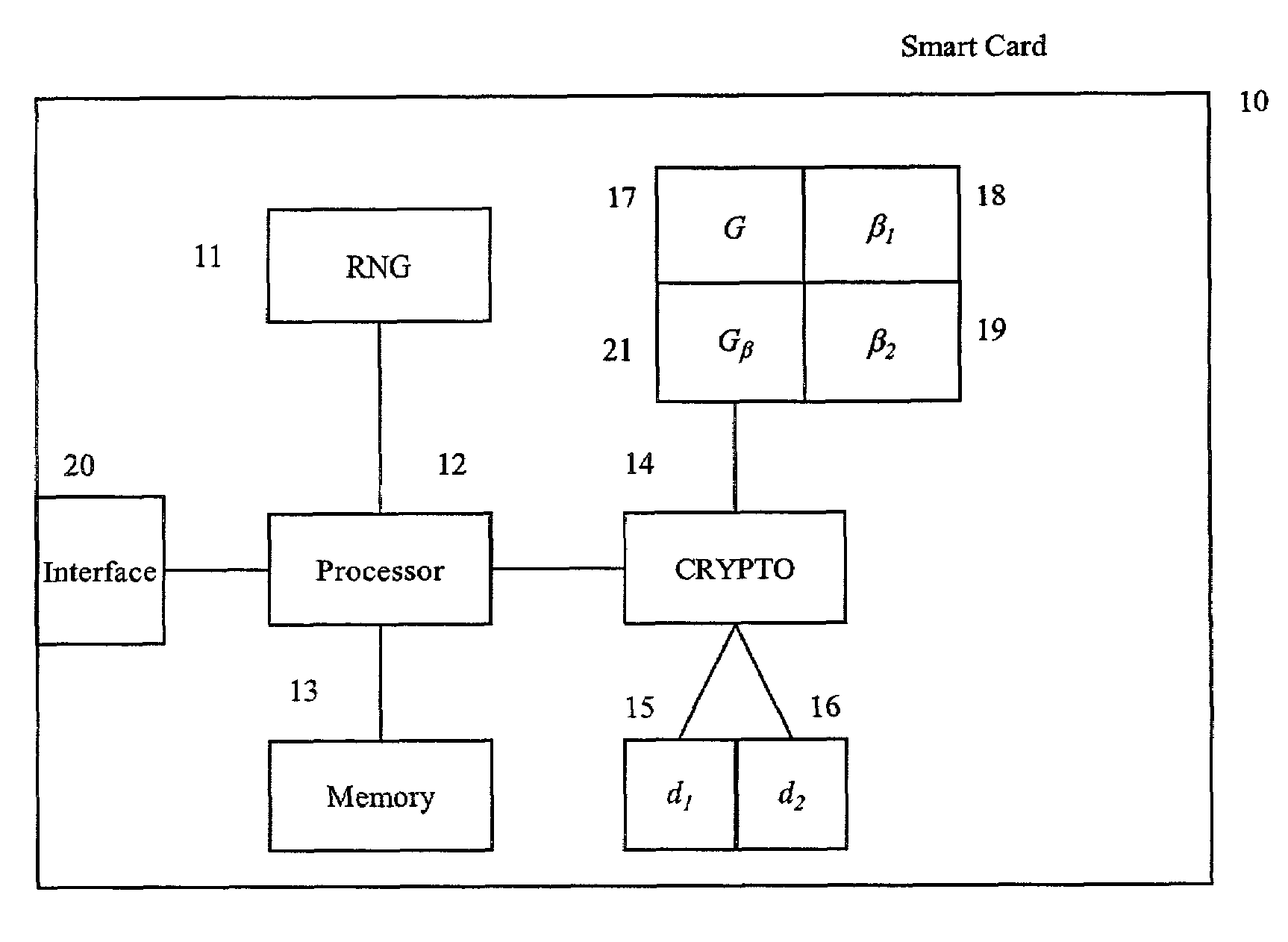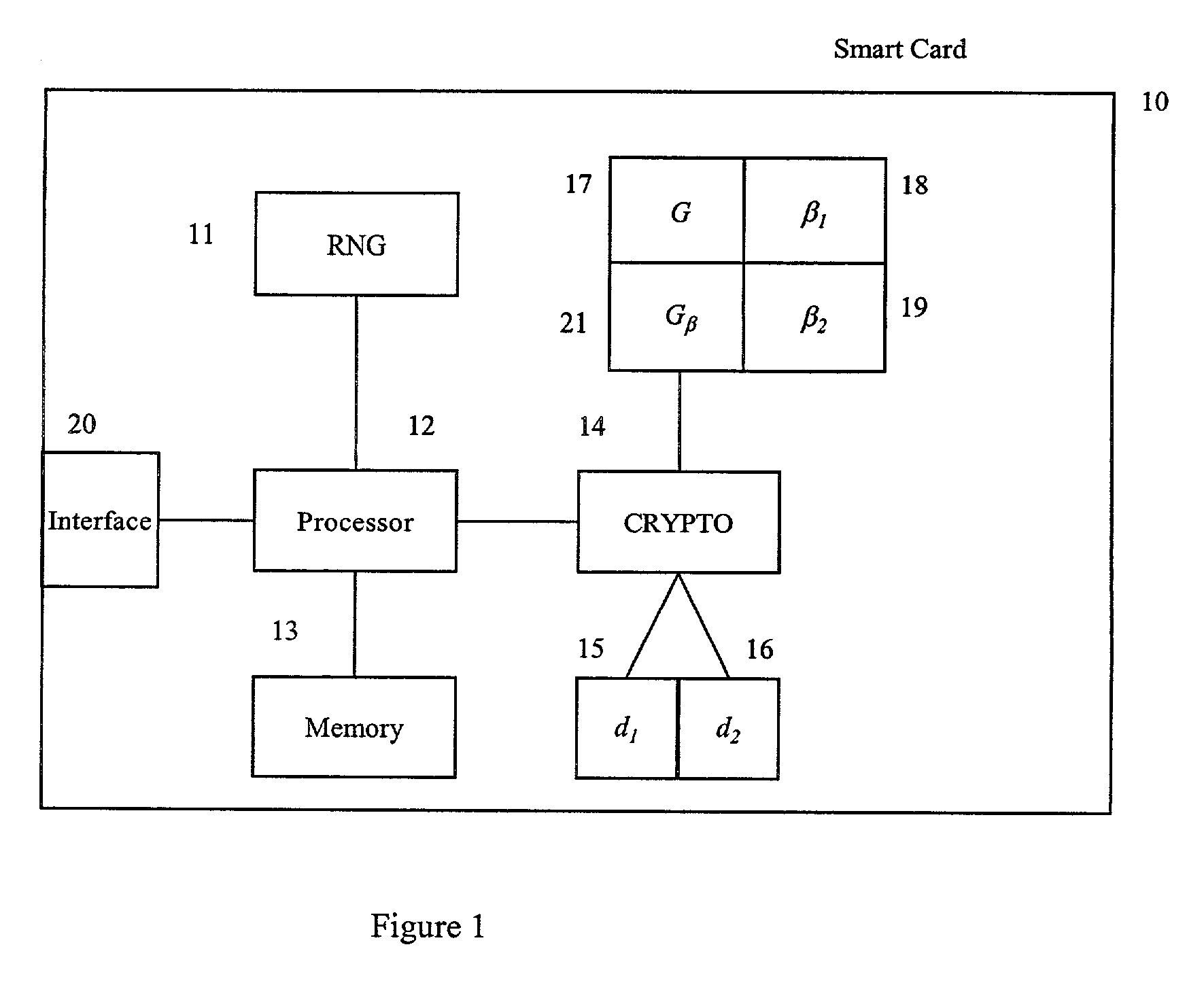Method for strengthening the implementation of ECDSA against power analysis
a technology of power analysis and implementation method, which is applied in the direction of digital transmission, liquid/fluent solid measurement, instruments, etc., can solve the problems of difficult for an attacker to gain direct access to secret information, computationally infeasible to break the scheme or algorithm, and the amount of work required to defeat tamper proof hardware exceeds the value of the information being protected, so as to facilitate the introduction of noise
- Summary
- Abstract
- Description
- Claims
- Application Information
AI Technical Summary
Benefits of technology
Problems solved by technology
Method used
Image
Examples
Embodiment Construction
[0024]A mechanism for protection against power analysis attacks on cryptographic systems involves the introduction of random values into existing algorithms employed by cryptographic systems. These random values are intended to introduce noise into the system.
[0025]This technique can be applied to a number of cryptographic systems, including encryption algorithms, decryption algorithms, signature schemes, and the like. In the preferred embodiment, the technique is applied to the ECDSA (elliptic curve digital signature algorithm) on a constrained device, typically a smart card, in order to inhibit the leakage of secret information.
[0026]In the ECDSA, as described in the ANSI X9.62 standard, the public values are:[0027]The domain parameters: An elliptic curve group E generated by a point G, and a finite field F.[0028]The signer's long-term public key D (corresponding to a long-term private key d).[0029]The signature (r, s).
[0030]FIG. 1 shows generally a smart card (10) for use in a cr...
PUM
 Login to View More
Login to View More Abstract
Description
Claims
Application Information
 Login to View More
Login to View More - R&D
- Intellectual Property
- Life Sciences
- Materials
- Tech Scout
- Unparalleled Data Quality
- Higher Quality Content
- 60% Fewer Hallucinations
Browse by: Latest US Patents, China's latest patents, Technical Efficacy Thesaurus, Application Domain, Technology Topic, Popular Technical Reports.
© 2025 PatSnap. All rights reserved.Legal|Privacy policy|Modern Slavery Act Transparency Statement|Sitemap|About US| Contact US: help@patsnap.com



